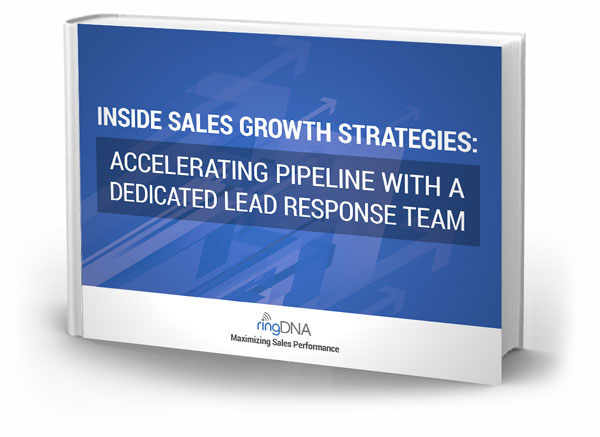4 Easy Ways to Increase Inbound Sales Call Conversions Today
Over the next few years, your business should expect and prepare for more inbound calls from customers than ever before. I know what you’re thinking – “More calls? Do people even make phone calls anymore?” While your customers might be using social media and texting more for personal communications, inbound business calls are actually at an all-time high. This is motivated by an increase in mobile adoption and mobile search. From mobile devices, dialing a business is often as simple as one click. In fact, BIA/Kelsey projects that inbound calls will more than double, reaching 65 billion annually.
And not only will your customers be calling you in higher numbers, they’ll also be more educated about your offerings than ever before. Companies are investing serious resources into content marketing. As a result, expect conversations with customers that have already researched your products, interacted with your content, read your blogs and more. When your customers call, it’s an important moment. They are likely ready for a serious sales conversation. And your sales reps better know more about your offering and competitors offerings than your customers do.
 Your customers already know about your company. And, in this new era of inbound sales, we think the most successful sales reps, will be those who also know something about their customers. By implementing the right tools, providing inbound sales reps with data that help them convert callers has never been easier.
Your customers already know about your company. And, in this new era of inbound sales, we think the most successful sales reps, will be those who also know something about their customers. By implementing the right tools, providing inbound sales reps with data that help them convert callers has never been easier.
Here are 4 ways to help sales reps have the conversations that transform callers into customers.
Route Customers to an Expert
Back when I was selling high-end interior design solutions, our customers sadly spent a lot of time on hold. When a call came through, it was answered by a receptionist or the first available rep. That rep had to start by finding out why a prospect was calling. Then, prospects were put on hold while they were transferred to the rep with the right product knowledge. I hate to think how many valuable customers got frustrated and hung up their phones.
The good news is that call routing solutions have progressed to the point where inbound callers can be automatically routed to the right reps. For example, say your company is running a commercial for a specific product you sell. You could include a phone number in your commercial that automatically routes to a rep or group of reps who are skilled in selling that product. If your customers can speak to the right reps right away, you’re going to close far more deals.
View CRM Data within the Context of Calls
CRM tools like Salesforce can store libraries full of valuable data about your prospects including whether they’ve made purchases before, what content they’ve downloaded, past communications history and more. But unless this data can be accessed at the exact moment that a prospect calls, it’s not going to help your reps close deals. Sure, you can look prospects up in your CRM after they call, but searching through a CRM for useful data can distract reps from selling. Our customers are using Revenue.io to immediately access valuable CRM data about prospects in the context of inbound calls.
Ask the Right Questions
When a customer picks up the phone to call your business it’s an important moment. It’s safe to assume they already know something about your company and they want to find out if your offerings are suitable for them. But conversely, sales reps taking inbound calls should also ask questions to find out if customers are suitable. Spending too much time on the phone with prospects who aren’t suitable can be a huge productivity killer. Develop an inbound sales process that includes asking the right qualification questions in order to help reps spend their time selling to the right prospects. For example, it’s important to find out whether an inbound caller has the budget for your offerings. It also helps to find out whether the caller is a key decision maker or an influencer.
Share Marketing Data with Sales Reps
 Marketers love data! And today’s marketers are capturing more data about prospects than ever using marketing automation tools and call tracking software. Acquiring data about prospects, such as their content preferences, which emails they respond to, and which ads they clicked on helps marketers spend their budget more successfully. However, most marketers just don’t go far enough. They capture all of this priceless data about prospects, yet neglect to share it with sales reps during calls. As a result, they lose out on the opportunity to drive more actual revenue as call come in from inbound marketing campaigns. Sales and marketing should get on the same page and invest in solutions that help share marketing data with reps in context. For example, Revenue.io can show reps which ad or keyword triggered a call the moment the phone rings. Inbound sales reps therefore instantly know what to sell.
Marketers love data! And today’s marketers are capturing more data about prospects than ever using marketing automation tools and call tracking software. Acquiring data about prospects, such as their content preferences, which emails they respond to, and which ads they clicked on helps marketers spend their budget more successfully. However, most marketers just don’t go far enough. They capture all of this priceless data about prospects, yet neglect to share it with sales reps during calls. As a result, they lose out on the opportunity to drive more actual revenue as call come in from inbound marketing campaigns. Sales and marketing should get on the same page and invest in solutions that help share marketing data with reps in context. For example, Revenue.io can show reps which ad or keyword triggered a call the moment the phone rings. Inbound sales reps therefore instantly know what to sell.
Want to learn more about inbound sales? Our newest blog quickly covers everything you need to know to build an inbound sales team.
